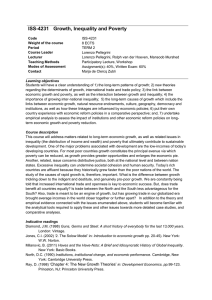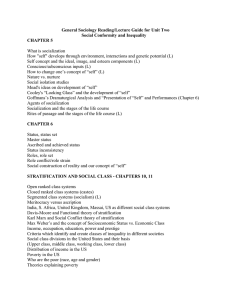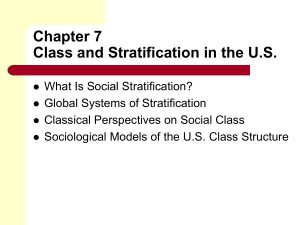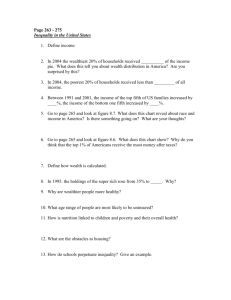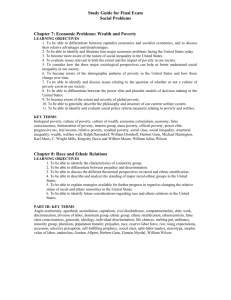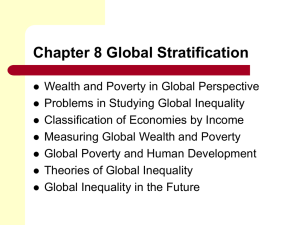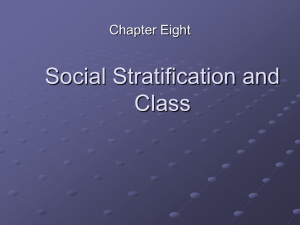Chapter 7 Class And Stratification In The United States
advertisement
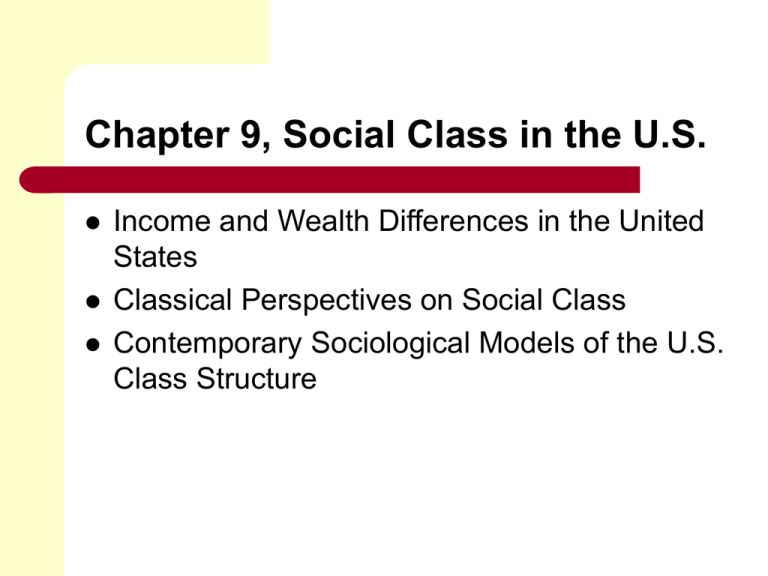
Chapter 9, Social Class in the U.S. Income and Wealth Differences in the United States Classical Perspectives on Social Class Contemporary Sociological Models of the U.S. Class Structure Chapter 9, Social Class in the U.S. Consequences of Inequality Poverty in the United States Sociological Explanations of Social Inequality in the United States U.S. Stratification in the Future Perspectives of Social Class Marx - Class position is determined by people’s relationship to the means of production. Weber - Developed an approach that focused on the interplay among wealth, prestige and power in determining class. The Weberian Model of the U.S. Class Structure The Upper Class - comprised of people who own substantial income-producing assets. The Upper-Middle Class - based on university degrees, authority on the job, and high income. The Middle Class - a minimum of a high school diploma or a community college degree. The Weberian Model of the U.S. Class Structure The Working Class - semiskilled workers, in routine, mechanized jobs, and workers in pink collar occupations. The Working Poor - live just above to just below the poverty line. The Underclass - includes people who are poor, seldom employed, and caught in longterm deprivation. Marxian Criteria for Class Structure 1. 2. 3. 4. Ownership of the means of production. Purchase of the labor of others (employing others). Control of the labor of others (supervising others on the job). Sale of one's own labor (being employed by someone else). Marxian Model of the Class Structure Capitalist Class - those who have inherited fortunes, own major corporations, or corporate executives who own stock or control company investments. Managerial Class - upper- and lower-level managers who may have some control over employment practices. Marxian Model of the Class Structure Small-Business Class - small business owners, craftspeople, and professionals who largely do their own work. Working Class - blue-collar workers and white-collar workers who do not own the means of production. Poverty in the U.S. 1 out of 3 persons below the poverty line are under 18 years of age. 2/3 of all adults living in poverty are women. White Americans account for 2/3 of those below the official poverty line. Functionalist Perspective: The Davis-Moore Thesis 1. 2. 3. Societies have tasks that must be accomplished and positions that must be filled. Some positions are more important than others. The most important positions must be filled by the most qualified people. Functionalist Perspective: The Davis-Moore Thesis 4. 5. The positions that require the most training are the most highly rewarded. The most highly rewarded positions are functionally unique and positions upon which others rely for expertise, direction, or financing. Conflict Perspective on Social Inequality Inequality does not serve as a source of motivation for people. Powerful individuals and groups use ideology to maintain their positions at the expense of others. Laws and informal social norms support inequality in the United States. Symbolic Interactionist Perspectives on Social Inequality Study social and psychological facts that influence members of the upper class to contribute to charitable and arts organizations. Study social interactions between people from divergent class locations.
